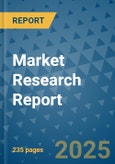This exceptional growth trajectory is shaped by the increasing global push toward smarter, greener, and more sustainable construction solutions. Although the COVID-19 pandemic initially created widespread disruptions across construction projects due to labor shortages, supply chain setbacks, budgetary constraints, and temporary site closures, the market has since rebounded strongly. During the recovery phase, many stakeholders prioritized urgent infrastructure needs over innovation, slowing adoption temporarily. However, the long-term shift toward sustainable materials has remained a strong catalyst. Governments and corporations are actively encouraging the use of sustainable alternatives that reduce lifecycle maintenance costs and environmental impact. Self-healing concrete has emerged as a promising solution, offering extended durability without the need for frequent repairs. North America and Europe currently dominate the global landscape, supported by strong regulatory frameworks, robust R&D ecosystems, and high levels of awareness. Countries like the U.S., the Netherlands, and Germany are front-runners in applying this technology to critical public infrastructure such as bridges, tunnels, and water treatment systems.
The infrastructure segment held a 46.2% share in 2024, driven by the extensive use of concrete in applications like tunnels, dams, and roadways, which often face high environmental stress. Self-healing technology offers a reliable, cost-efficient solution to extend service life in such conditions, supporting both safety and performance. By automatically addressing micro-cracks before they worsen, the technology significantly cuts down on repair costs and downtime, making it highly suitable for high-value assets.
The capsule-based self-healing concrete segment was valued at USD 43.8 billion in 2024 and is forecasted to grow at a CAGR of 31.9% from 2025 to 2034. This method involves embedding microcapsules filled with healing compounds within the concrete mixture. When a crack forms, these capsules rupture and release the healing agent, effectively sealing the damage. This approach offers several advantages, including a controlled release mechanism, protection of active materials from environmental exposure, and the ability to seal larger cracks. The scalability and ease of integration into traditional construction workflows have fueled the widespread adoption of this method, particularly for commercial and residential structures.
U.S. Self-Healing Concrete Market was valued at USD 21.2 billion in 2024 and is projected to grow at a 32.3% CAGR from 2025 to 2034. The region, which accounted for a 25% share in 2024, is seeing significant tailwinds from federal infrastructure programs and stimulus packages. These initiatives are accelerating the adoption of next-generation building materials across public projects, particularly in roads, public buildings, and bridges, where durability and reduced maintenance are key priorities.
Leading companies shaping the Global Self-Healing Concrete Industry include Kryton International Inc., Heidelberg Materials, Green-Basilisk BV, BASF SE, Holcim, Buzzi Unicem USA, Acciona, Wacker Chemie AG, Sika AG, Xypex Chemical Corporation, Devan, CEMEX S.A.B. de C.V., Master Builders Solutions, Akzo Nobel N.V., and Fescon. To secure their competitive edge in the Global Self-Healing Concrete Market, key players are adopting a multi-pronged strategy. Many are heavily investing in R&D to develop advanced healing technologies that can be integrated seamlessly into various construction environments. Strategic partnerships with construction firms and government bodies are enhancing product visibility and accelerating field deployment. Companies are also expanding manufacturing capabilities and refining product portfolios to address both high-end infrastructure and cost-sensitive commercial applications.
Comprehensive Market Analysis and Forecast
- Industry trends, key growth drivers, challenges, future opportunities, and regulatory landscape
- Competitive landscape with Porter’s Five Forces and PESTEL analysis
- Market size, segmentation, and regional forecasts
- In-depth company profiles, business strategies, financial insights, and SWOT analysis
This product will be delivered within 2-4 business days.
Table of Contents
Companies Mentioned
The companies profiled in this Self-Healing Concrete market report include:- Acciona
- Akzo Nobel N.V.
- BASF SE
- Buzzi Unicem USA
- CEMEX S.A.B. de C.V.
- Devan
- Fescon
- Green-Basilisk BV (Basilisk Self-Healing Concrete)
- Kryton International Inc.
- HEIDELBERG CEMENT
- Holcim
- Master Builders Solutions
- Sika AG
- Wacker Chemie AG
- Xypex Chemical Corporation








